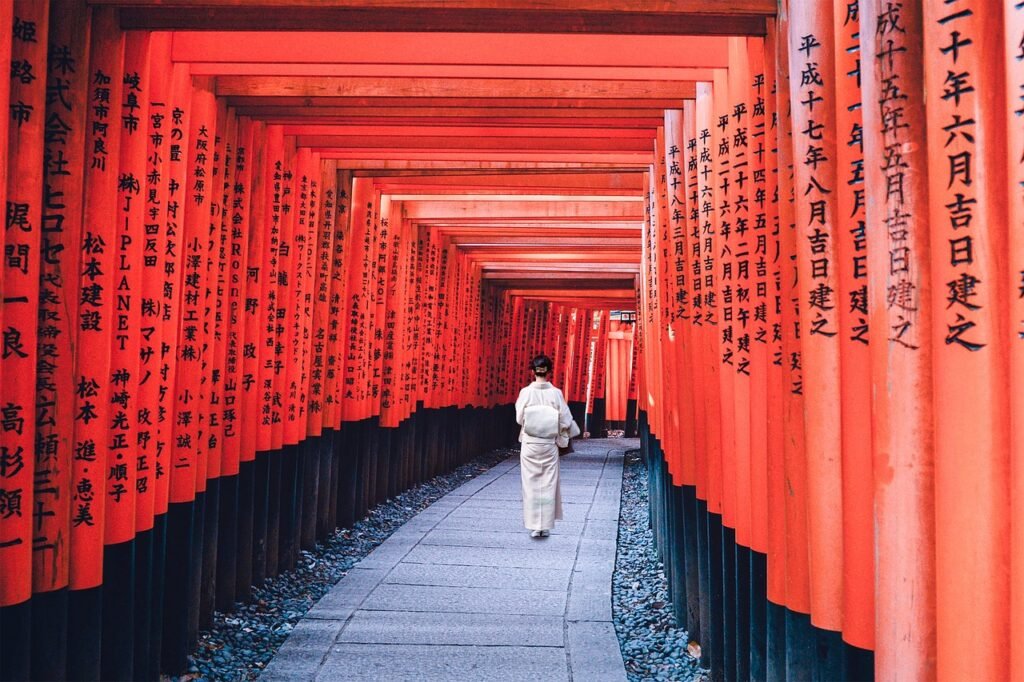Japanese Saving Methods
Japanese saving methods have long been admired for their simplicity, efficiency, and focus on long-term financial health. Rooted in a cultural appreciation for mindful spending and consistent discipline, these methods provide valuable lessons that can be applied globally. By adopting key principles such as automating savings, living below one’s means, and tracking every expense, individuals can achieve financial stabilityBeing able to manage your money so you can pay bills, save f... More without sacrificing the things that matter most. In this article, we’ll explore the core aspects of Japanese saving habits and how they can transform the way we approach our finances.
1. Consistent Saving Habits
One of the core tenets of Japanese money-saving practices is the focus on small, consistent efforts. Rather than aiming for huge amounts of savings at once, the Japanese value steady, incremental contributions over time. A popular practice is the “Kakeibo” method, a traditional budgetingThe process of creating a plan to spend your money, often in... More technique where families keep track of every expense. By carefully recording spending and prioritizing savings, the Japanese develop habits that help them build wealth bit by bit. Whether it’s saving a fixed percentage of your income or setting a manageable goal for each month, the consistency of small contributions makes saving more sustainable.
2. Automating Savings
In Japan, many people take advantage of automatic savings programs, where a portion of their salary is directly deposited into savings accounts. This ensures that money is set aside before it even hits their wallets, minimizing the temptation to spend. Automating savings is a simple yet powerful strategy, and it eliminates the need for willpower in the face of consumerism. By automatically saving a portion of your paycheck, you make saving effortless and prioritize it over short-term spending.
3. Mindful Spending
Japan places significant importance on being mindful about how money is spent. The Japanese often live by the principle of “wabi-sabi,” which values simplicity and finding contentment in less rather than seeking excess. This mindset encourages people to make intentional choices, considering if a purchase is truly necessary or aligned with their long-term goals. Adopting a mindful spending habit, similar to how many in Japan approach their purchases, means asking yourself if something brings true value to your life. Instead of mindlessly accumulating items, you focus on quality, purpose, and your future financial goals.
4. Living Below Your Means
Japanese culture tends to emphasize humility and modest living, no matter one’s income level. By prioritizing needs over wants and rejecting the desire for lavish, flashy lifestyles, individuals can allocate their money toward meaningful savings and investments. This practice doesn’t necessarily mean completely depriving oneself—it means avoiding lifestyle inflationThe increase in the prices of goods and services over time, ... More, where one’s expenses increase proportionally to income. Instead of constantly upgrading your lifestyle as your salary increases, adopting a minimalist mindset can help you keep living costs in check and direct excess money toward savings or investments.
5. The Role of Financial Education In Japan
Financial literacy is emphasized in Japan from an early age. In school and within families, children are taught about the importance of managing money, budgetingThe process of creating a plan to spend your money, often in... More, and saving. As a result, many people grow up with a strong understanding of how money works. This education sets a foundation for individuals to continue making smart financial decisions as adults. In contrast, many other countries lack sufficient financial education, which can make personal finance seem more daunting. Taking the time to educate yourself about saving, investing, and budgetingThe process of creating a plan to spend your money, often in... More, as the Japanese do, helps create long-term financial success.
The Japanese method for saving money offers valuable insights for anyone looking to improve their financial habits. By focusing on small, consistent savings, automating your savings process, being mindful of your spending, living below your means, and prioritizing financial education, you can take control of your money and build a solid financial foundation. These principles encourage not just saving, but also developing a thoughtful and intentional approach to money—one that allows you to focus on your future goals instead of falling victim to impulse spending. By incorporating even just a few of these ideas into your daily life, you can experience the same financial stabilityBeing able to manage your money so you can pay bills, save f... More that so many in Japan enjoy.

Here are a few simple real-life examples that break down Japanese saving methods in easy-to-understand terms for anyone to learn and apply:
1. Automated Savings: “Pay Yourself First”
- Example: Imagine your paycheck arrives every month. Instead of waiting until you’ve spent everything on bills, coffee, and shopping, you set up your bank account to automatically take 10% of your salary and deposit it into a savings account as soon as the money comes in. This is something that many Japanese people do to avoid temptation and ensure they save before they spend. It’s a simple way to grow your savings without even thinking about it.
2. Keeping Track of Expenses: “Write It All Down”
- Example: In Japan, many people use a budget book called “Kakeibo” to track every penny. It’s not fancy—just a notebook where you write down every single purchase you make. Let’s say you buy lunch, coffee, or pay bills. Write it down. By seeing all the things you’re spending money on, you’ll start to notice small habits (like buying a daily $5 coffee) that add up. This awareness can help you stop wasteful spending.
3. Mindful Spending: “Live Modestly”
- Example: In Japan, even those with decent incomes choose to live simply. For example, if you get a raise at work, instead of upgrading your lifestyle—buying a bigger house, a new car, or expensive clothing—you keep living at the same level and save the extra money. This principle is about not letting your expenses balloon just because your income increases. Think of it like this: If you get a bigger paycheck, pretend that nothing changed—keep the same budget and stash the extra cash.
4. Choosing Quality Over Quantity: “Buy What Matters”
- Example: In Japan, many people choose fewer, higher-quality items rather than buying many cheap things that quickly break. For instance, instead of buying a new cheap pair of shoes every few months, you might buy one well-made pair that lasts years. Instead of grabbing a quick meal from a fast-food chain, you cook simple, healthier meals at home. By focusing on buying less, but better, you save more in the long run.
5. Emergency Savings: “Expect the Unexpected”
- Example: Many Japanese families build what’s called an “emergency fund” for times when life throws them a curveball—like medical expenses or a job loss. They might save a month’s salary (or more) in a separate savings account, keeping it for emergencies only. It’s the same idea as having a rainy-day fund: saving a little every month to protect yourself in case something unexpected happens. Imagine you break your phone, and it costs $500 to replace. If you’ve saved for situations like this, you won’t have to scramble to find the money.
Real-Life Story Example: Tom’s Journey to Saving Like the Japanese
Tom, a 28-year-old teacher, struggled to save money despite earning a steady income. He frequently found himself living paycheck to paycheck and had little left for emergencies or long-term goals. After hearing about the Japanese method of saving, he decided to give it a try and slowly made a series of small, manageable changes to his financial habits. Here’s how Tom turned his savings around by adopting these methods.
1. Pay Yourself First
One of the first changes Tom made was setting up an automatic transfer to his savings account. At the beginning of each month, 10% of his paycheck was moved to a separate account before he had the chance to spend it. This method meant that even if Tom didn’t think about saving, it was happening automatically. Initially, it was hard for Tom to get used to seeing less money in his checking account, but over time, he appreciated how quickly his savings grew without much effort.
2. Tracking Every Expense
Next, Tom began using the Japanese practice of “Kakeibo,” which involved tracking every penny he spent in a simple notebook. He would write down his daily purchases—whether it was a morning coffee or a grocery run—and at the end of each week, he reviewed his spending. At first, Tom was shocked at how much he was spending on small, unnecessary purchases, like extra snacks or weekend deliveries. By seeing this clearly, he realized that reducing these habits would lead to significant savings over time. He cut back on his weekend takeout meals, saving nearly $100 a month.
3. Living Below His Means
When Tom got a pay raise, he resisted the urge to upgrade his lifestyle. Instead of splurging on a new car or moving into a more expensive apartment, he chose to live as he had before. He redirected the extra money into his savings, building up a financial cushion for the future. This decision proved to be crucial, as it helped him accumulate a larger savings balance faster without feeling the need to compete with others on material possessions.
4. Mindful Spending
Inspired by the Japanese value of choosing quality over quantity, Tom started making more thoughtful purchases. Instead of buying inexpensive clothing that wore out quickly, he invested in a few higher-quality pieces that would last longer. Similarly, instead of impulsively buying new gadgets, Tom started saving for larger, more meaningful purchases. This shift in mindset helped him save even more money while still enjoying the things he valued.
5. Building an Emergency FundAn emergency fund is a savings buffer set aside to cover une... More
Finally, Tom built up an emergency fundAn emergency fund is a savings buffer set aside to cover une... More. After reading about its importance in Japanese saving habits, he made it a priority. Every month, he set aside a fixed amount of his income to save for unexpected expenses like car repairs or medical bills. Within six months, he had saved enough to cover three months of living expenses. This emergency fundAn emergency fund is a savings buffer set aside to cover une... More provided him with peace of mind and removed the stress of worrying about surprise costs.
By the end of the year, Tom had not only built up a healthy savings account, but he also found he had more financial freedom. He no longer felt stressed about money, and with his consistent saving habits in place, he began to think more about investing his money for even greater future growth.
Tom’s journey to adopting Japanese saving methods wasn’t instantaneous, but with patience, consistency, and a willingness to make small changes, he found that even the simplest methods can lead to substantial financial improvements.




